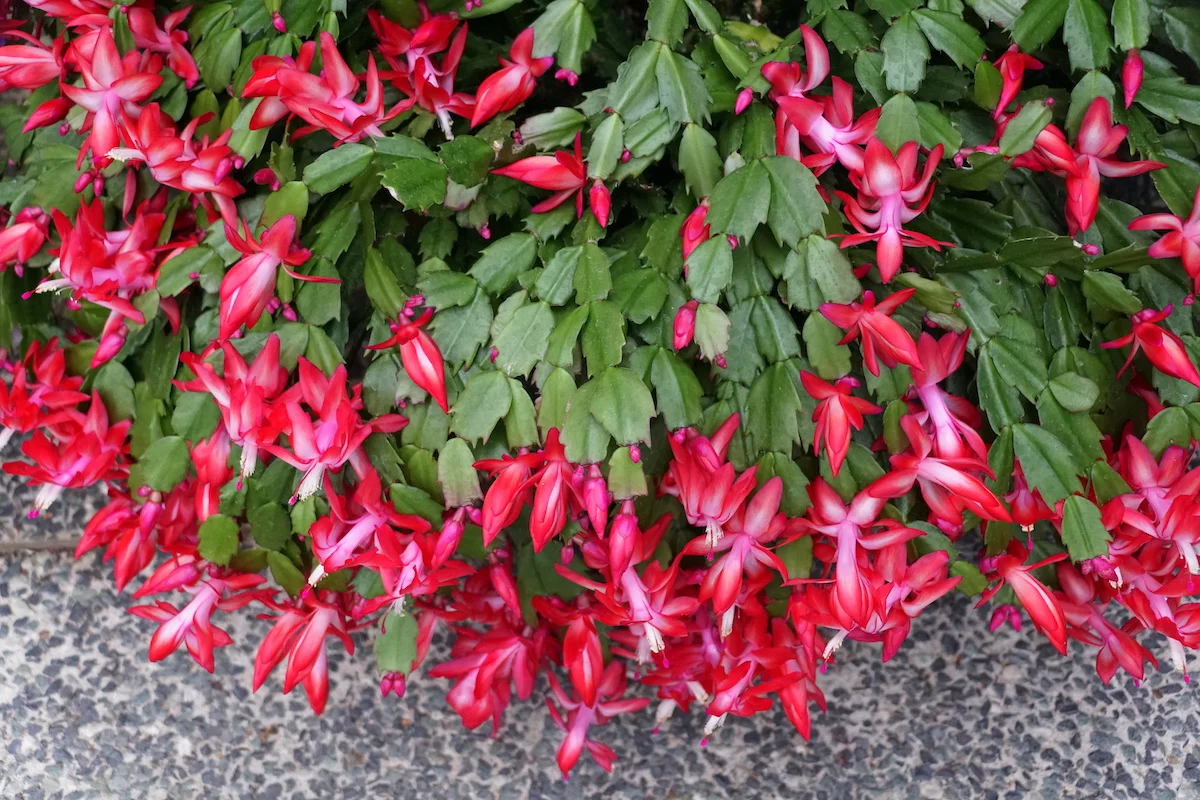The Thanksgiving cactus (Schlumbergera truncata), often confused with its Christmas and Easter cactus relatives, is a stunning plant known for its vibrant, tubular flowers that brighten up any space during the holiday season. To ensure your Thanksgiving cactus blooms beautifully and on time, follow these essential tips:
1. Understand the Plant’s Needs
- Bloom Timing: Thanksgiving cactus typically blooms in late fall to early winter, around Thanksgiving, which is why it’s named as such. It’s important to start preparing the plant several months in advance to encourage blooming.
2. Provide Proper Light
- Light Requirements: Thanksgiving cacti prefer bright, indirect light. Too much direct sunlight can scorch the leaves, while too little light can inhibit flowering.
- Light Duration: During the lead-up to blooming, provide 12-14 hours of darkness each night to simulate the natural short-day conditions that trigger flowering.
3. Maintain the Right Temperature
- Ideal Temperature: Keep the plant in a cool room with temperatures between 60-70°F (15-21°C). Cooler temperatures (around 50-60°F or 10-15°C) during the night can help encourage buds to form.
- Avoid Temperature Extremes: Keep the cactus away from drafts, heaters, or air conditioners, which can cause stress and affect blooming.
4. Adjust Watering Practices
- Watering Schedule: Water the cactus moderately. Allow the top inch of soil to dry out between waterings. Overwatering can lead to root rot, while underwatering can stress the plant and reduce blooming.
- Humidity: Thanksgiving cacti prefer higher humidity levels. Consider misting the plant occasionally or placing it near a humidity tray.
5. Feed the Plant Appropriately
- Fertilization: Use a balanced, water-soluble fertilizer every 2-4 weeks during the growing season (spring and summer). Switch to a low-phosphorus fertilizer or one formulated for cacti and succulents during the fall to help promote blooms.
- No Fertilizer During Blooming: Avoid fertilizing the plant during its blooming period, as this can interfere with the flower development.
6. Prune and Groom
- Pruning: Lightly prune the plant after blooming to encourage bushier growth and better flower production the following year. Remove any dead or straggly segments.
- Grooming: Keep the plant free from pests and diseases, which can impact blooming. Regularly check for issues like mealybugs or spider mites.
7. Promote Flower Bud Formation
- Darkness: To promote bud formation, ensure the cactus receives 6-8 weeks of dark, cool conditions before the expected bloom time. This period of darkness mimics the natural shortening of days and triggers blooming.
- Temperature Change: A slight drop in temperature at night can also help induce bud formation.
8. Repotting and Soil
- Repotting: Repot the cactus every 2-3 years, ideally in the spring after the blooming period. Use a well-draining cactus mix to avoid waterlogging.
- Soil: Ensure the pot has good drainage, as Thanksgiving cacti do not like sitting in soggy soil.
9. Encourage Bud Development
- Stress: Avoid moving the plant around excessively. Stress from relocation can cause buds to drop prematurely.
- Environmental Stability: Keep the plant in a stable environment with consistent light and temperature conditions.
10. Know When to Expect Blooms
- Bud Formation: You should start to see buds forming a few weeks before the expected bloom period. If the plant is healthy and conditions are right, it should bloom around Thanksgiving or early December.
Conclusion
To ensure your Thanksgiving cactus blooms beautifully and on time, it’s crucial to provide the right conditions, including proper light, temperature, and watering practices. By understanding the plant’s needs and making a few adjustments, you can enjoy a spectacular display of flowers during the holiday season. With a little care and attention, your Thanksgiving cactus will add a vibrant touch to your festive celebrations.
